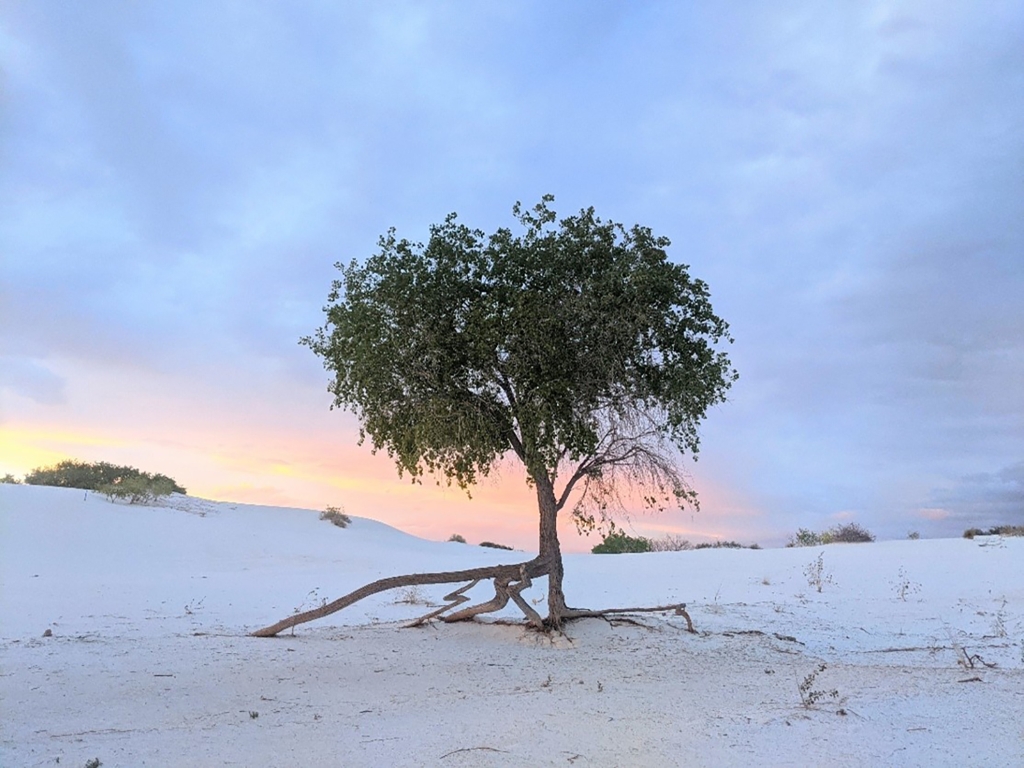
The Rio Grande cottonwood tree survives in White Sands National Park due to some adaptations it already had to survive in the surrounding desert. The stems that attach the leaves to the tree are flat instead of round. This helps the leaves twist in the wind allowing them to not be blown off the tree in the high-speed winds that often happen here. The roots run deep into the ground and hold the trees in place, so they don’t lose their grip during windstorms. During the fall, the green leaves of the cottonwood will start to turn yellow to orange in color.
Migratory birds will use the groves of cottonwoods as resting points. The trees give them a place to stop and rest during their long journey.
Migratory birds will use the groves of cottonwoods as resting points. The trees give them a place to stop and rest during their long journey.
Is there something we missed for this itinerary?
Itineraries across USA

Acadia

Arches National Park

Badlands

Big Bend

Biscayne

Black Canyon Of The Gunnison

Bryce Canyon

Canyonlands

Capitol Reef

Carlsbad Caverns

Channel Islands

Congaree

Crater Lake

Cuyahoga Valley

Death Valley

Dry Tortugas

Everglades

Gateway Arch

Glacier

Grand Canyon

Grand Teton

Great Basin

Great Smoky Mountains

Guadalupe Mountains

Haleakalā

Hawaiʻi Volcanoes

Hot Springs

Indiana Dunes

Isle Royale

Joshua Tree

Kenai Fjords

Kobuk Valley

Lassen Volcanic

Mammoth Cave

Mesa Verde

Mount Rainier

North Cascades

Olympic

Petrified Forest

Pinnacles

Rocky Mountain

Saguaro

Shenandoah

Theodore Roosevelt

Virgin Islands

Voyageurs

White Sands

Wind Cave

Yellowstone

Yosemite

Zion